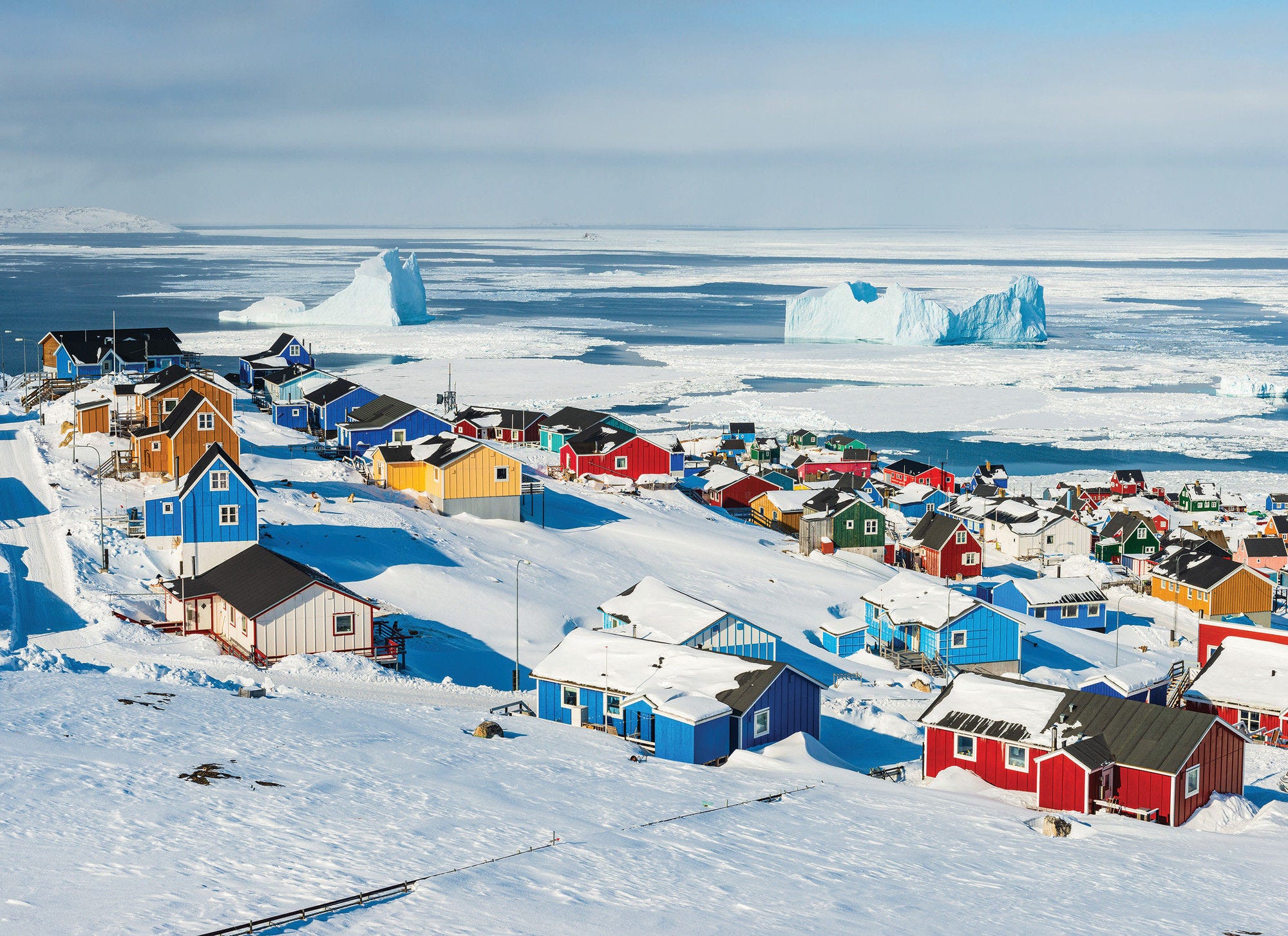The Arctic is a vital region that helps preserve the balance of the global climate. The Arctic environment is particularly sensitive to short-lived climate pollutants, including black carbon, due to their strong warming effect. With ambitious policy action to reduce air pollutants, Arctic Council countries would obtain a positive effect on health and the environment throughout their territory, while also helping to slow down climate change by reducing emissions of black carbon. This report calls for ambitious policy action to reduce air pollution in Arctic Council countries, highlighting the environmental, health, and economic benefits from policy action.
The Economic Benefits of Air Quality Improvements in Arctic Council Countries

Abstract
Executive Summary
The Arctic is a delicate ecosystem that plays a vital role in maintaining stability in the global climate. Changes in the local climate could amplify global warming, with far-reaching consequences for the global environment, human health and well-being.
A range of air pollutants are driving changes in the Arctic region, including greenhouse gases, black carbon – a component of fine particulate matter – and ground-level ozone. These pollutants contribute to atmospheric warming, thus accelerating snow melting and exacerbating the effects of climate change in the Arctic.
Arctic Council countries – Canada, Denmark, Finland, Iceland, Norway, the Russian Federation, Sweden, and the United States – play a central role in reducing air pollution in the Arctic. These countries have affirmed their support to collectively reduce black carbon emissions by 25-33% by 2025 from 2013 levels. In Arctic Council countries, around 18 million people live in areas where fine particle concentrations exceed the World Health Organization (WHO) safe air quality guidelines (10 µg/m3). Ambitious policy action to reduce emissions of a wide range of air pollutants, including black carbon, would reduce these negative health impacts and contribute to slowing down climate change in the Arctic. But how much would this cost and what would the impacts be on their economies and the health of the region’s populations?
This report sets out to answer these questions by providing a quantitative assessment of the biophysical and economic benefits of air pollution policies in Arctic Council countries. The analysis relies on a suite of modelling tools to project the impacts of increasingly ambitious policy action up to 2050, compared with business as usual.
Key findings
Thanks to policies currently in place and to the deployment of the best available techniques (such as end-of-pipe technologies and the use of cleaner fuels), emissions of air pollutants have been decreasing for some years in Arctic Council countries and are projected to decrease further in the coming decades. Arctic Council countries are projected to come close to meeting the collective black carbon target.
Additional policies to extensively adopt the best available techniques would allow Arctic Council countries to reduce their emissions more substantially and halve their black carbon emissions by 2025, exceeding their collective target. This would require additional investments in best available techniques especially in the residential and transport sectors.
These emission reductions would improve air quality and lower populations’ exposure to high air pollution levels. In particular, by 2050 the number of people exposed to fine particle concentrations above the WHO air quality guidelines of 10 µg/m3 would decrease from 18 million to 1 million people. These air quality improvements could avoid four out ten air pollution-related deaths in Arctic Council countries by 2050, as well as thousands of cases of debilitating illnesses, such as chronic bronchitis and childhood asthma.
These improvements in air quality can be achieved without affecting economic growth. Despite some additional costs for households and firms, this report shows that at the aggregate level, the macroeconomic costs of achieving the emission reductions are offset by the macroeconomic benefits of improved human and environmental health. Such benefits include higher labour productivity, lower health expenditures, and higher agricultural productivity. These aggregate results hide substantial differences across regions. In particular, macroeconomic costs are higher in the Russian Federation, as baseline emissions are higher compared to the other Arctic Council countries.
Adding the welfare benefits of reduced mortality and pain and suffering from illness, the positive economic consequences of air pollution policies become substantial.
If other regions of the world also reduced their pollutant emissions, Arctic Council countries would reap additional benefits from lower transboundary air pollution. The competitive position of Arctic Council countries would also improve with widespread international policy action, thus levelling the playing field.
The implementation of air pollution policies in combination with a sustained energy transition and the achievement of global climate targets would reduce greenhouse gas emissions and air pollutants simultaneously, bringing significant additional health, environmental, and welfare gains.
A call for action
In addition to the many benefits from air pollution policies included in the modelling, there are many others benefits that could not be quantified. These include impacts on biodiversity and ecosystems; preservation of buildings and sites of cultural heritage, and tourism; health effects such as on fertility, cognitive abilities and birth weight. Furthermore, improvements in air quality can also reduce the severity of the respiratory problems caused by viruses such as COVID-19. Taken together, this suggests that the benefits of air pollution policies could be even greater than those quantified in the modelling analysis.
The results presented in this report need to be interpreted bearing in mind the uncertainties surrounding socio-economic projections, emissions estimates, and the biophysical and economic consequences of air pollution policies. However, these uncertainties should not deter policy action. The results clearly highlight that policy action addressing air pollution in Arctic Council countries will lead to significant environmental, health and welfare benefits. In addition, improvements to the local climate in the Arctic can improve the livelihood of local communities, reduce global climate change, and lower the risk of triggering climate tipping points.
Related publications
-
 2 August 2023
2 August 2023 -
 20 March 2023
20 March 2023




